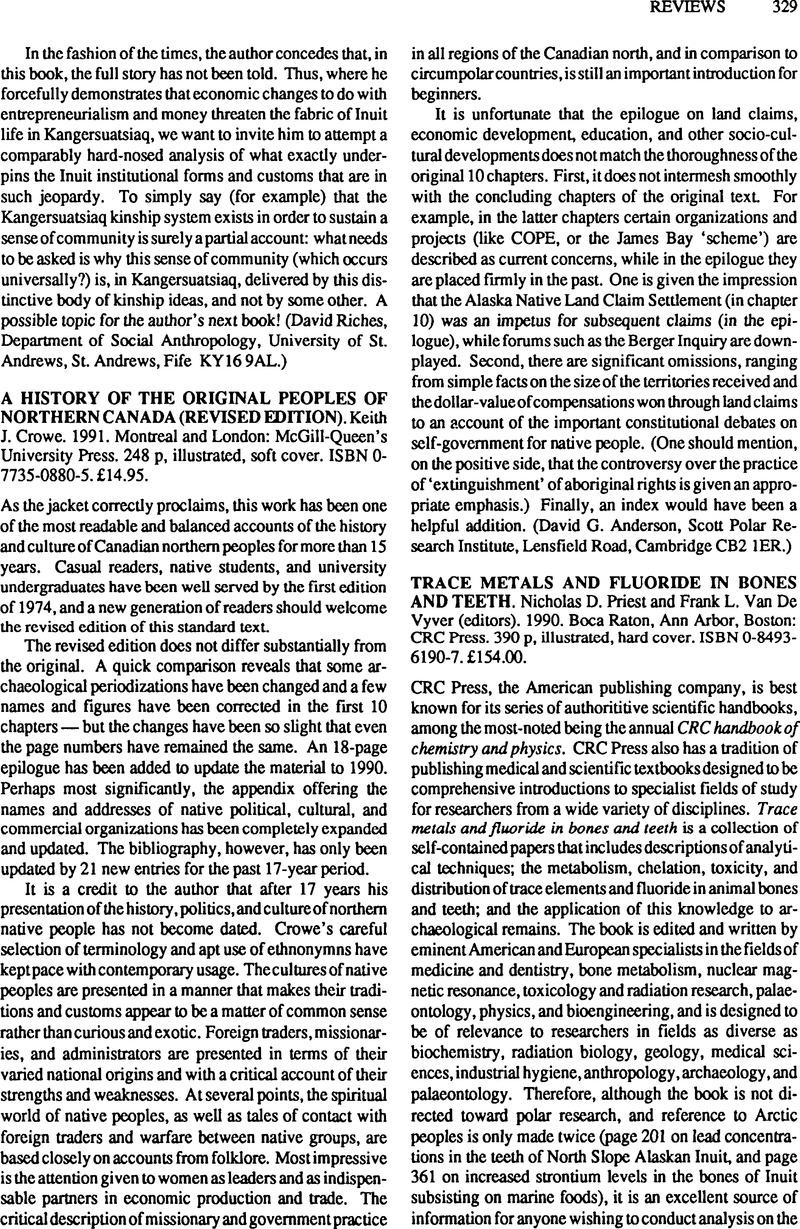No CrossRef data available.
Article contents
Trace Metals and Fluoride in Bones and Teeth. Nicholas D. Priest and Frank L. Van De Vyver (editors). 1990. Boca Raton, Ann Arbor, Boston: CRC Press. 390 p, illustrated, hard cover. ISBN 0-8493-6190-7. £154.00.
Published online by Cambridge University Press: 27 October 2009
Abstract
An abstract is not available for this content so a preview has been provided. As you have access to this content, a full PDF is available via the ‘Save PDF’ action button.

- Type
- Reviews
- Information
- Copyright
- Copyright © Cambridge University Press 1992
References
Beattie, O. 1985. Elevated bone lead levels in a crewman from the last Arctic expedition of Sir John Franklin (1845–1848). In: Sutherland, P.D. (editor). The Franklin era in Canadian Arctic history. Ottawa: National Museum of Man, Mercury Series, Archaeological Survey of Canada Paper 131: 141–48.CrossRefGoogle Scholar
Delmas, R.J., and Legrand, M.. 1989. Long-term changes in the concentrations of major chemical compounds (soluble and insoluble) along deep ice cores. In: Oeschger, H., and Langway, C.C. Jr, (editors). The environmental record in glaciers and ice sheets. New York and Chichester: John Wiley & Sons: 319–41.Google Scholar
Grandjean, P. 1989. Bone analysis: silenttestimony of lead exposures in the past. Meddelelserom Grøonland, Man & Society 12: 156–60.Google Scholar
Lee, S.H., Kim, K.T., and Kim, S.H.. 1990. Trace metals in the surface water of Maxwell Bay, King George Island, Antarctica. Korean Journal of Polar Research 1 (2): 11–15.Google Scholar




